Iridescent tones of red, green, orange, and yellow combine to create a spectacular and iconic cloud forest bird.
Meet the Toucan Barbet

Photo Courtesy of Vince Smith / CC BY 2.0
The toucan barbet (Semnornis ramphastinus), is a species of barbet in the Semnornithidae family. A medium-sized robust barbet, these birds are 19 to 21 cm (7.5–8.3 in) long, weighing in at 80–115 g (2.8–4.1 oz). The beak is robust with a yellow maxilla and a light green mandible, both with dark ends. The plumage is colorful and includes a black crown, “mask”, and thin cervical collar. The species has long occipital feathers and a conspicuous white stripe behind the eyes, which has a bright red-colored iris. The nape of the neck is golden-brown and becomes yellow towards the rear. The throat, upper breast, and sides of the nape are grayish-blue. The lower breast and middle belly are bright red, while the lower belly is yellowish-green.
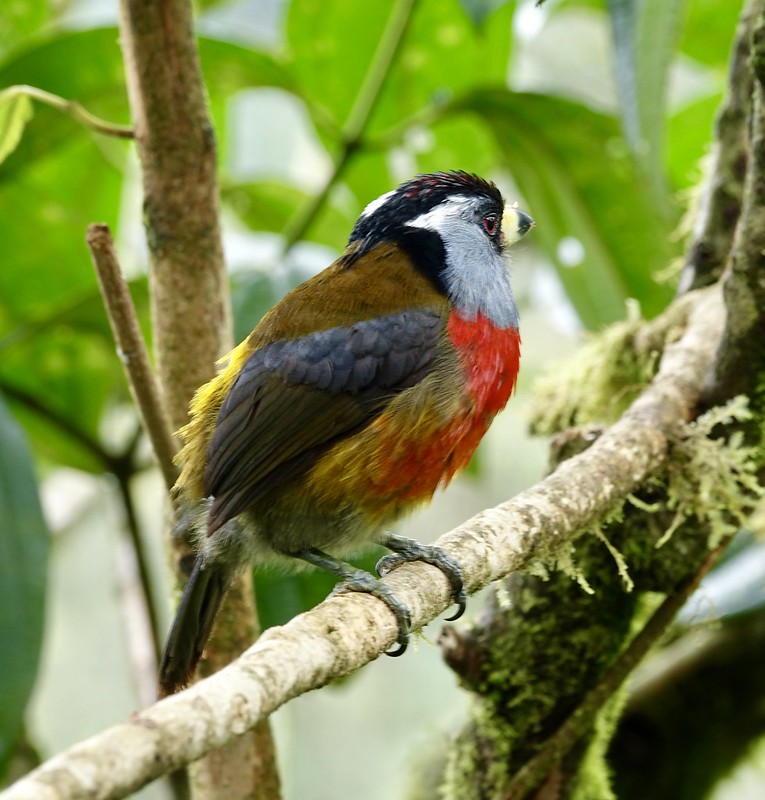
Photo Courtesy of Mike’s Birds / CC BY-SA 2.0
The wings and tail are grey.
Both sexes are almost identical, though the female’s plumage is slightly less bright
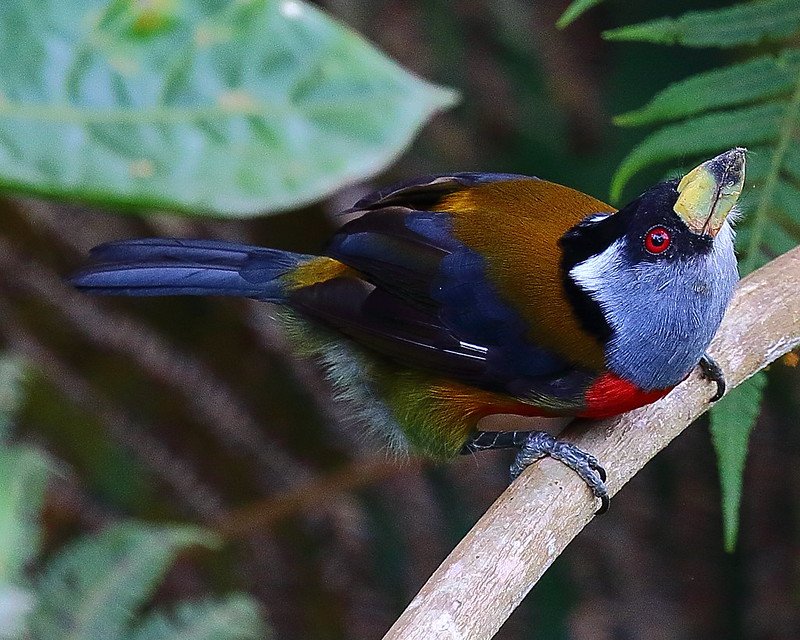
Photo Courtesy of ryanacandee / CC BY 2.0
This species is found along the western slopes of the Andes, in southern Colombia and northern Ecuador.
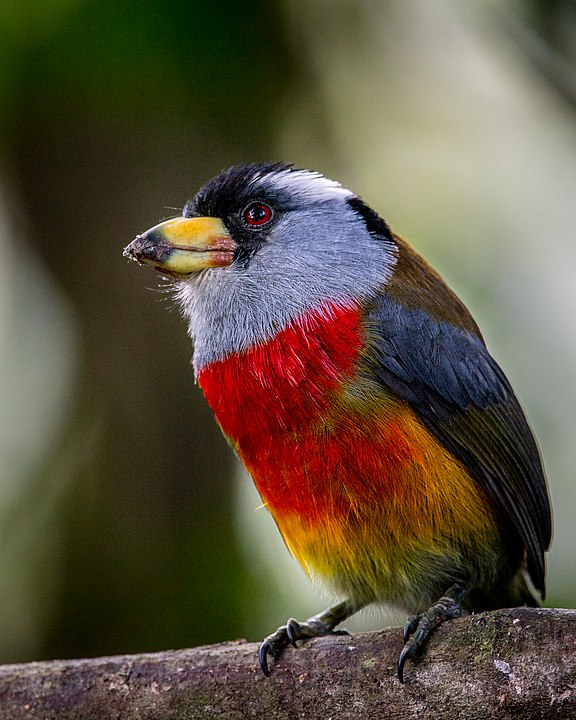
Photo Courtesy of Andy Morffew / CC BY 2.0
The toucan barbet prefers mountain evergreen forests, secondary forests, open woodlands, and pastures, at altitudes between 1.000-2.400 m.
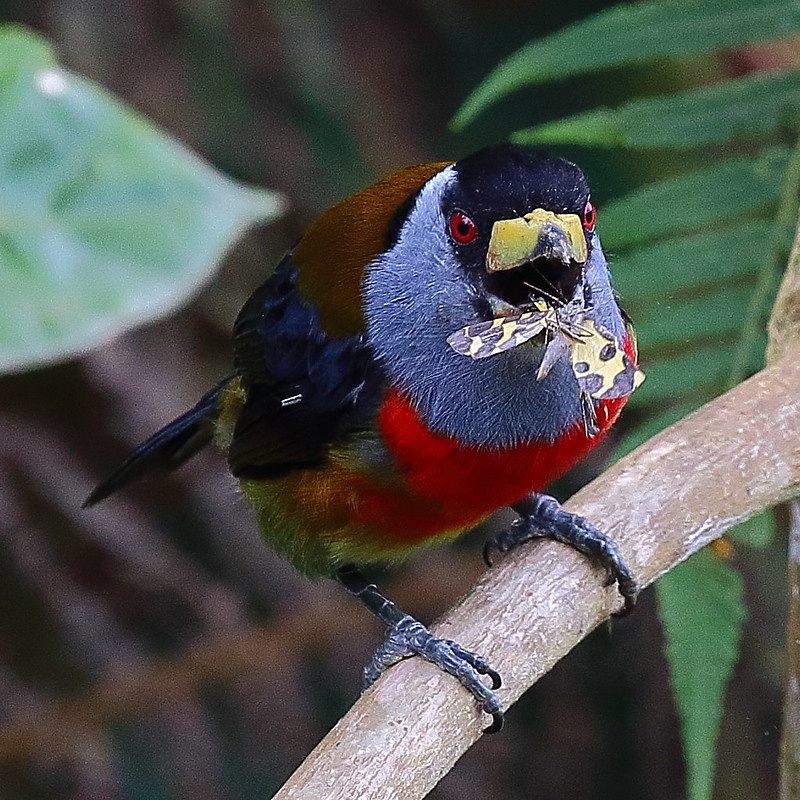
Photo Courtesy of ryanacandee / CC BY 2.0
Mainly a frugivorous bird, they like to eat a wide range of fruits, namely Cecropia and Ficus, but will also eat termites and other insects when given the opportunity.
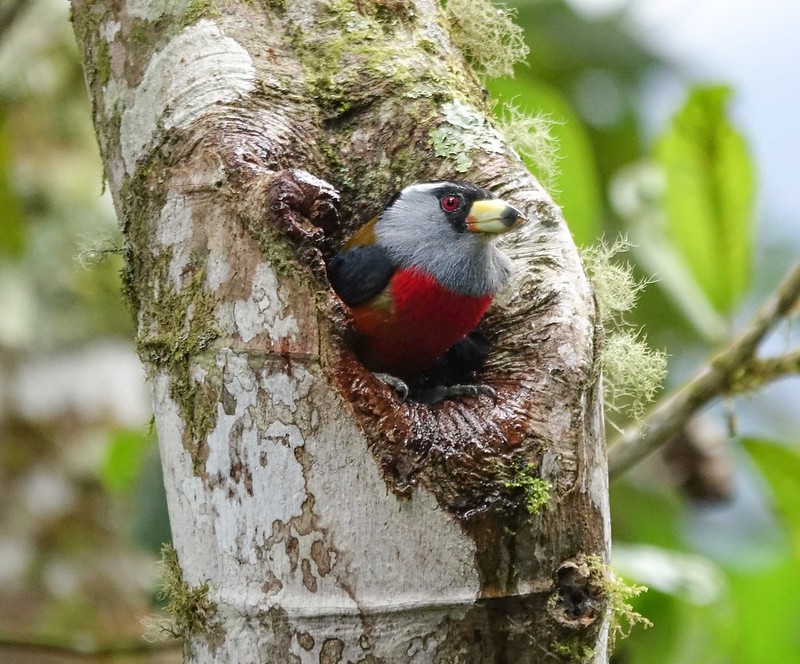
Photo Courtesy of Mike’s Birds / CC BY-SA 2.0
Toucan barbets breed from February through to October. They live in small family groups of up to 6 birds, with an adult pair and young that help to raise the next clutch. They nest in a tree cavity, where the female lays 2-3 eggs, these are incubated by all group members for 15 days. The chicks are fed by all group members and fledge 43-46 days after hatching, but only become fully independent 4 weeks later.
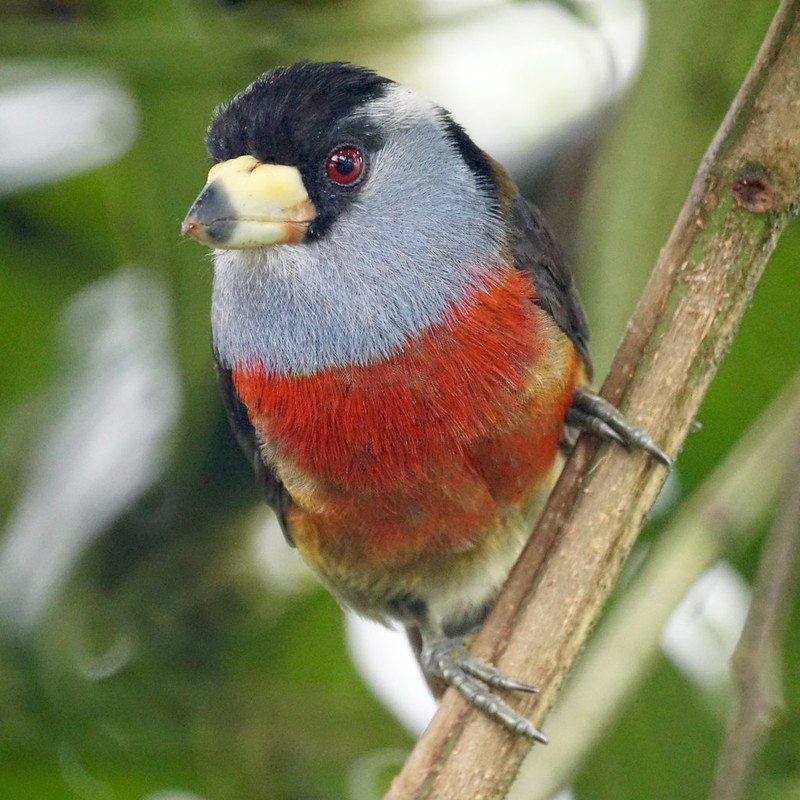
Photo Courtesy of Mike’s Birds / CC BY-SA 2.0
The population of this species is declining at a moderately rapid rate, due to illegal trapping for the international cage bird trade and habitat loss through intensive logging, human settlement, cattle grazing, mining, and coca, and palm cultivation.
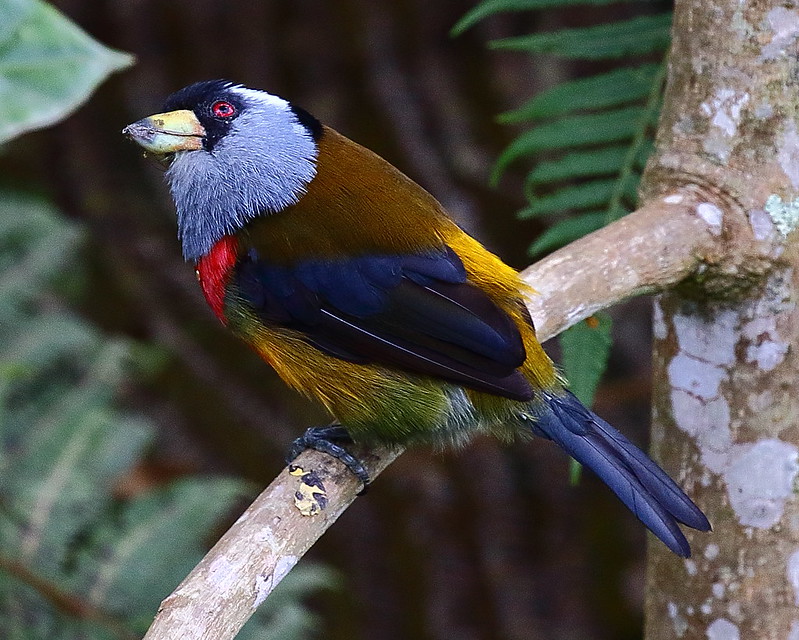
Photo Courtesy of ryanacandee / CC BY 2.0
Watch this bird right here in the video below:




